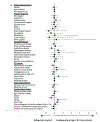Failures in the Respectful Care of Critically Ill Patients
- PMID: 30170754
- PMCID: PMC6657523
- DOI: 10.1016/j.jcjq.2018.05.008
Failures in the Respectful Care of Critically Ill Patients
Abstract
Background: The emotional toll of critical illness on patients and their families can be profound and is emerging as an important target for value improvement. One source of emotional harm to patients and families may be care perceived as inadequately respectful. The prevalence and risk factors for types of emotional harms is under-studied.
Methods: This prospective cohort study was conducted in nine ICUs at a tertiary care academic medical center in the United States. Prevalence of inadequate respect for (a) the patient and (b) the family, as well as prevalence of perceived lack of control over the care of their loved ones, was assessed by the Family Satisfaction with Care in the Intensive Care Unit instrument. The relationship between these outcomes with demographic and clinical covariates was assessed. Stratification by patient survivorship was performed in sensitivity analysis.
Results: Of more than 1,500 respondents, 16.9% and 21.8% reported that the patient or the family member, respectively, received inadequate respect. No clinical characteristics of the patients were associated with inadequate respect for either the patient or the family member. By comparison, more than half of respondents reported a lack of control over their loved one's care; this finding was associated with multiple clinical factors. Prevalence and associated factors differed by patient survivorship status.
Conclusion: Care that is inadequately respectful to patients and families in the setting of critical illness is prevalent but does not appear to be associated with clinical characteristics. The incidence of such emotional harms is nuanced, difficult to predict, and deserves further investigation.
Copyright © 2018 The Joint Commission. Published by Elsevier Inc. All rights reserved.
Conflict of interest statement
Figures




References
-
- Liang SY, Marschall J. Update on emerging infections: news from the Centers for Disease Control and Prevention. Vital signs: central line-associated blood stream infection-s—United States, 2001, 2008, and 2009. Ann Emerg Med. 2011;58:447–451. - PubMed
-
- Marsteller JA, et al. A multicenter, phased, cluster-randomized controlled trial to reduce central line-associated bloodstream infections in intensive care units. Crit Care Med. 2012;40:2933–2999. - PubMed
Publication types
MeSH terms
Grants and funding
LinkOut - more resources
Full Text Sources
Other Literature Sources

